All about artificial turf
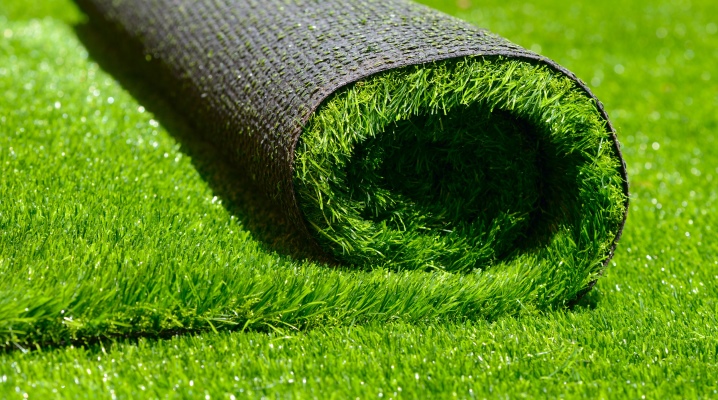
At all times, a well-groomed green carpet on a personal plot was considered an ornament, which has not lost its relevance to this day. In addition, in recent years, more and more people began to break green lawns for outdoor activities, which not only looks aesthetically pleasing, but also has a healing effect. Due to the soil features in some areas, it is not always possible to sow lawn grass. And artificial turf in such cases is a good alternative, which also has its pros and cons.
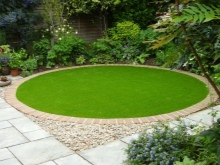
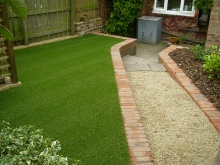
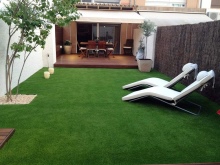
Advantages and disadvantages
The undoubted advantage is the long service life of the artificial turf, which, with proper installation and maintenance, will be about 10 years. At the same time, having spent it once, you will not have to spend time and money annually on eliminating bald spots in the event of their formation. As for the care, it is limited to the removal of weeds in time (until they have grown and have not spilled seeds). Occasionally during rainy summers with strong gusts of wind, cleaning with a vacuum cleaner and detergent with a brush may be required. Artificial lawns are frost-resistant enough that they can be flooded with water in harsh winters and used as a skating rink

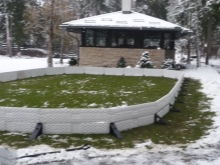
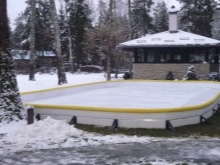
The disadvantages include a fairly rapid heating of the coating in the sun, which in a particularly hot summer can cause the release of toxins that are unsafe for humans. On artificial grass, under the influence of dampness, microbes rapidly multiply, which can enter the human body (if there is an open deep wound). With proper installation and operation, the lawn will last no longer than 10 years, and if you do not follow the instructions and rules of use, then the expensive coating will have to be changed earlier.
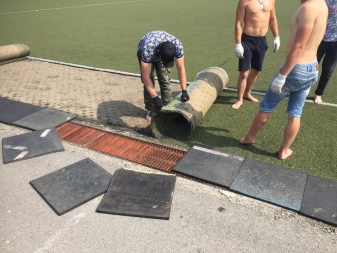

In the case of extreme pollution, it will sometimes be necessary to make an effort to clean up the artificial turf. But, in comparison with natural grass, periodic watering is not required. There are a lot of pros and cons, but there are times when an artificial turf is the only possible way of landscaping a territory.

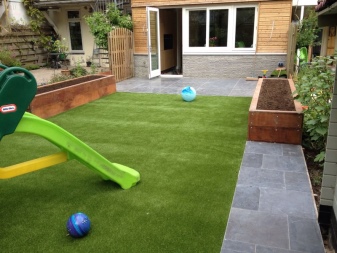
When is it used?
Artificial turf is indispensable if there is no way to grow natural grass. This may be due to the characteristics of the soil (when clay or sand predominates in it). In addition, clay soil is prone to rapid trampling (when pits are formed under the influence of certain loads), which not only complicates landscaping, but also looks unaesthetic. In these cases the inventors of the artificial turf provided for laying a metal grate under a roll with grass, which significantly reduces the pressure on the ground.

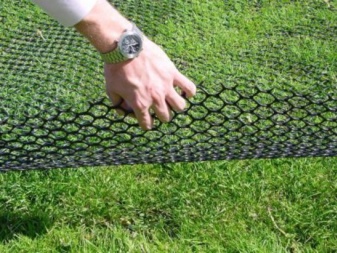
There are times when the need to design a green lawn arose on a previously cemented territory, which will also save energy and money. It is much cheaper to lay an artificial turf on cement or concrete, especially since the crate is not needed, rather than trying to remove the existing coating. In addition, the only opportunity to plant greenery using artificial grass may be a case associated with a lack of sunlight.
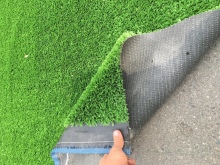
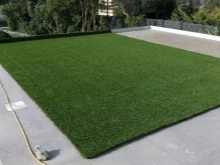
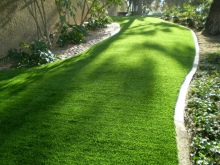
And in such cases, we are talking not only about a separate shadow side on the site, but about entire regions where there is a lack of heat (for example, Siberia). In such regions, natural grass does not have time to delight with its beauty for a long time, since the heat comes late, and the cold comes early. As for places where everything is in order with warm weather, then before buying a lawn, you should study all the available varieties, which, with the right choice, will significantly extend the operation.

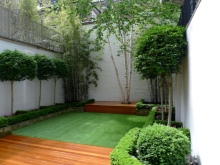
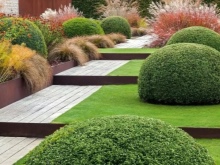
Species overview
Artificial turf in rolls is produced. Depending on the purpose, the height of the fiber installed on the substrate can vary from 10 to 60 mm. The pile itself, which resembles a variety of short sedge, is made of synthetic fibers: polyethylene (semi-filled and non-filled), polypropylene (filled).
Rolls are produced in accordance with the following parameters: strip width can be from 0.4 to 4 m, length - 2 m, the height of the lawn depends on the height of the fiber. If necessary, you can cut the strips of the required size yourself.
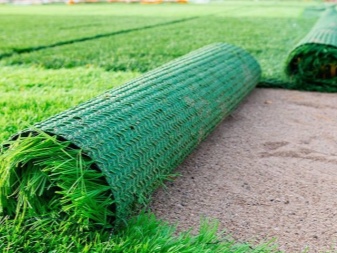
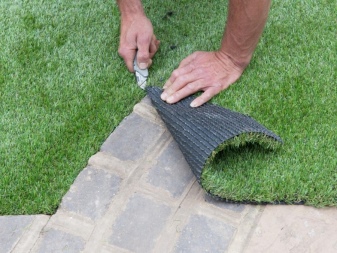
Initially, such a synthetic surface was developed for outdoor activities. But recently, a plastic rug has been increasingly used in the country, where paths can be used to decorate the distance between the beds. You can lay them on the concrete floor near the pool.

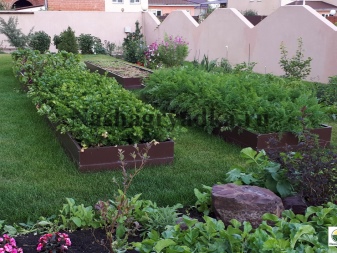
Artificial lawns, in terms of functionality, are mainly divided into two types.
- Used as a decorative coating (non-filling).
- Used as a cover on the territory intended for active pastime (semi-filled and non-sleeping).
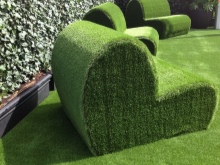

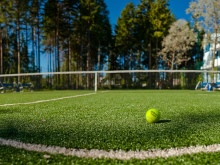
The first variety is characterized by tough and dense, evenly colored grass. Lawns of the 2nd group have rather soft grass, the shade of its color varies from bright to dark, which imitates a natural covering. Decorative lawns are used in the yard, on the terrace.
With regard to lawns for sports fields, the choice must be made based on the length of the grass. For football and rugby courts, grass is suitable where the length of the grass is 60 mm, for volleyball courts - 15-20 mm, for tennis courts - 6-10 mm.
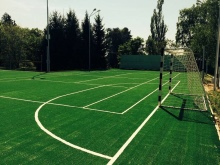
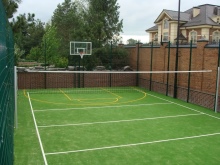

According to the method of laying, lawns are divided into the following types:
- semi-filled;
- unsalted;
- filling.
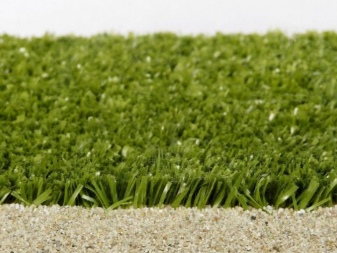
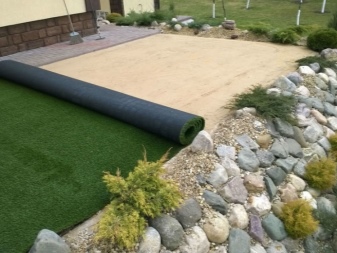
Semi-filled
It has high wear resistance, therefore it is most often used for covering playgrounds. A semi-filled lawn is made of polyethylene fiber, which is rarely presented, the gaps are covered with quartz sand, which increases the strength of the coating.
Thanks to the polyethylene underlay, the lawn is soft, which minimizes the pain of a fall.
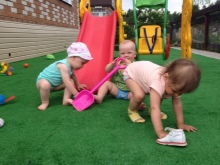
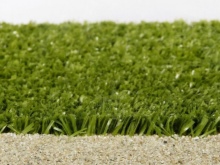
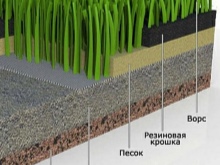
Unsaturated
Unfilled lawns are those coverings, the grass of which is difficult to distinguish from natural, since it is made of thin polyethylene fibers. It is used to decorate small areas where frequent walking and vigorous activity are not provided, since the coating is characterized by fast wear resistance. Due to the low wear resistance, the price of the coating is low, which makes it possible to use it over a fairly large area.
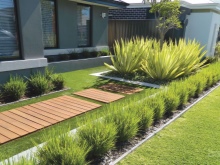
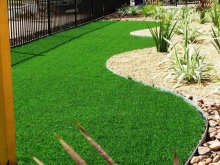
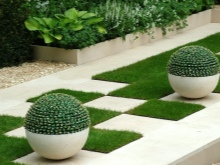
Backfill
Made of polypropylene, which makes the cover both the toughest and the most durable. It is installed in places of a large concentration of people with a fairly high load (football fields, rugby fields). Additional strength is achieved due to the fact that the gaps between the blades of grass are covered with quartz sand mixed with rubber granules, the mixture is included.
Thanks to the combination of sand and rubber granules, the lawn is considered the safest, which eliminates the possibility of cutting from the villi of the grass when falling.
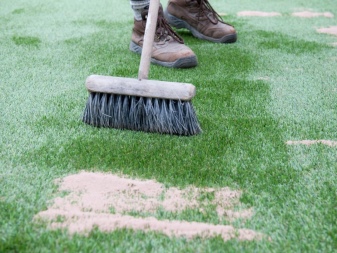
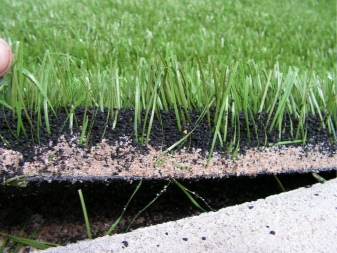
Nuances of choice
Before buying, it should be noted that manufacturers, in order to extend the life of their product, divide them, depending on the place of use, into two groups:
- for garden;
- for places where there is a roof (pool under the roof, etc.).
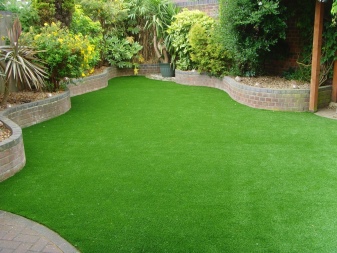
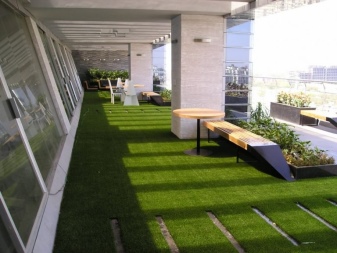
To choose the right lawn, you need to take this factor into account, as it significantly affects the wear resistance. Lawns designed to withstand moisture will not get wet in heavy rains, since they are made in such a way that excess moisture instantly goes into the ground.And lawns that are not designed for this will soon become unusable due to stagnant water.
In addition, when it was not possible to achieve a uniformly flat area, it is recommended to choose a cover with dense grass, which will hide minor differences.


When choosing artificial grass, you should not be guided by price alone. Otherwise, you can buy a low-quality fake, which, after the first frosts, will quickly crack and become unusable. And also it is imperative to ask the shops for documents on the lawn, which is proof of quality and safety. The foreign brands Condor, Daily Grass, Green Grass have been tested by users and time. The products of the domestic manufacturer Optilon are not inferior in quality. The difference will only be in the price.
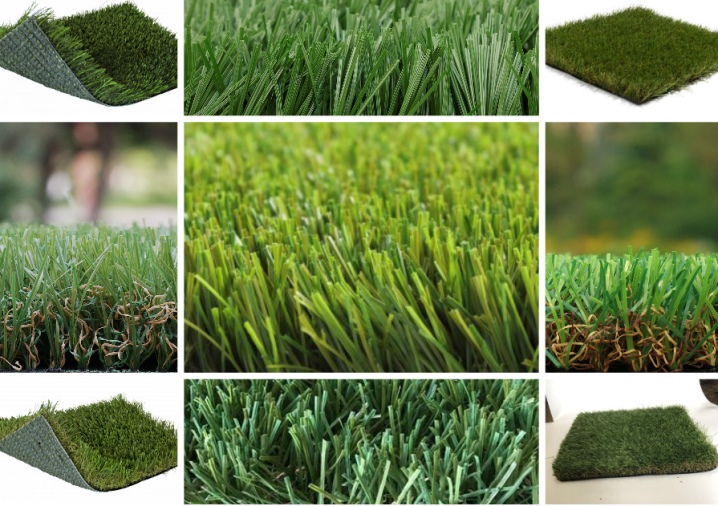
How to lay it right?
The main rule of laying a lawn with your own hands is to carefully prepare the soil, while all work must be done in dry weather. Soil preparation is about more than leveling and removing weeds. If the soil on the site is sufficiently clayey, with poor moisture transmission, then you should take care of installing a drainage system. For this, a special membrane is laid on the ground, which allows moisture to pass through. From above it is sprinkled with crushed stone, on which the substrate is laid, on which, in turn, the lawn covering is laid. In some cases, you can limit yourself to digging trenches around the perimeter of the site, which are filled with rubble and sprinkled with earth.
In regions where the soil contains sufficiently large admixtures of sand, it is impossible to do without the use of a special metal lattice, which prevents the appearance of holes under the influence of heavy loads on the soil. If the territory on which the artificial grass flooring will be laid is concrete, then you can immediately start laying the strips. If the plantation is unpaved, then before fixing it to the ground, it is necessary to level the surface, while removing all weeds.
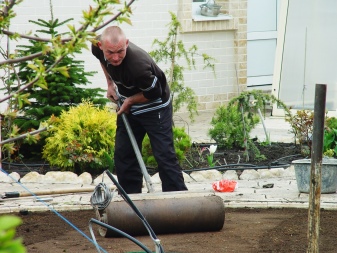
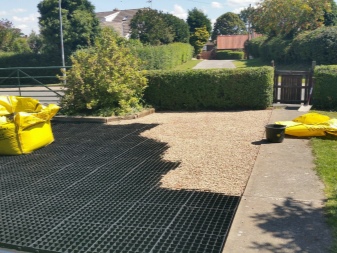
Experts recommend treating the soil with a special solution to prevent the appearance of weeds before laying the lawn. The strips of the rolled lawn spread in length and overlap, which will allow them to be excluded during use. For installation, care should be taken to have the following tools.
- A knife with a sharp and sturdy blade.
- Spatula, the height of the teeth must be at least 3 mm.
- Shovel, rake and hard broom.
- Vibrating shovel or hand roller for compaction.
- Hammer and pins for non-concrete base and dowels, hammer for concrete.
- Rubber brush to remove glue residues and tape measure.
- Docking tape, which is coated with glue, for fixing the strips.
- Lawn grating for the formation of paths. Its use is due to the condition of the soil itself: it is not needed on a concrete base. If the base is unpaved, then you should take care of its acquisition.
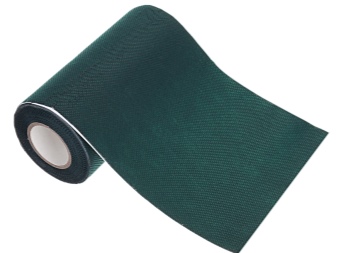
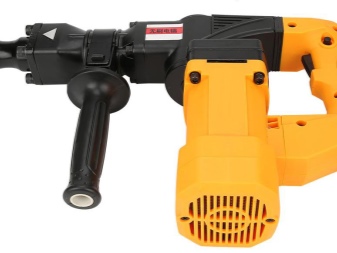

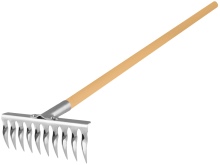
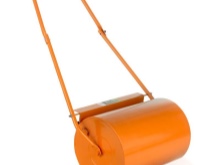
As soon as the soil is ready, we lay the lawn sheets cut to the required size on it. This must be done by superimposing one strip on another by about 1.5 cm. It is necessary to cut off the layers evenly, otherwise this will cause folds to appear. For the same reason, you should not rush to fix the coating, and after laying, leave it for 12 hours so that it straightens out.
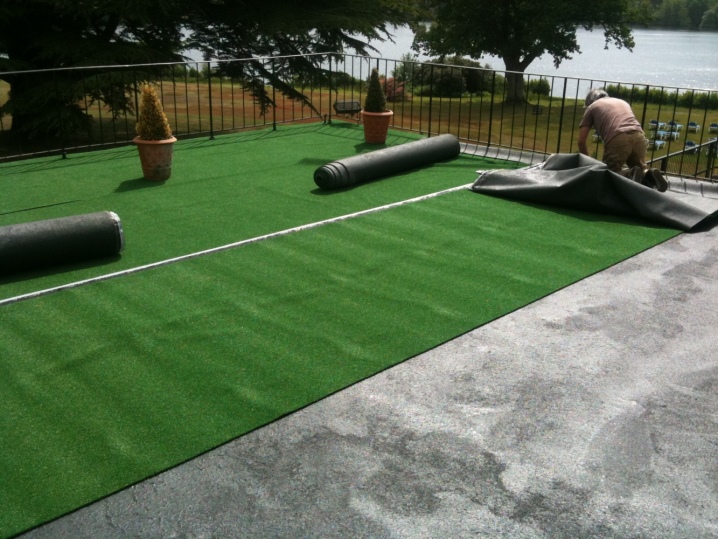
Then we proceed to fixing, which we do with glue or staples. Cover the joints of the strips with connecting tapes, the width of which varies from 25 to 30 cm. The tape is also attached to the glue, after which it is necessary to walk with a hand roller for better fixation.
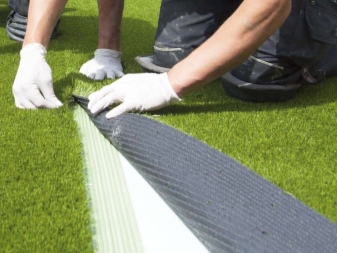
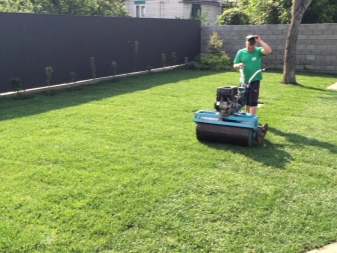
It is advisable to fix the lawn with a special border around the perimeter, otherwise it may go away from the loads. The border is also fixed with glue. The work begun on laying the lawn should not be put on the back burner, otherwise, due to a possible temperature drop, the fixation of the glue will be uneven, which will also cause blistering or even periodic flaking.
The final touch is filling the lawn with sand or a special granulator (if the lawn is filled or semi-filled). The exact grain size is indicated in the instructions for the selected lawn. After all the work done, it is necessary to comb the lawn with a rake, removing the remnants of glue and sand.
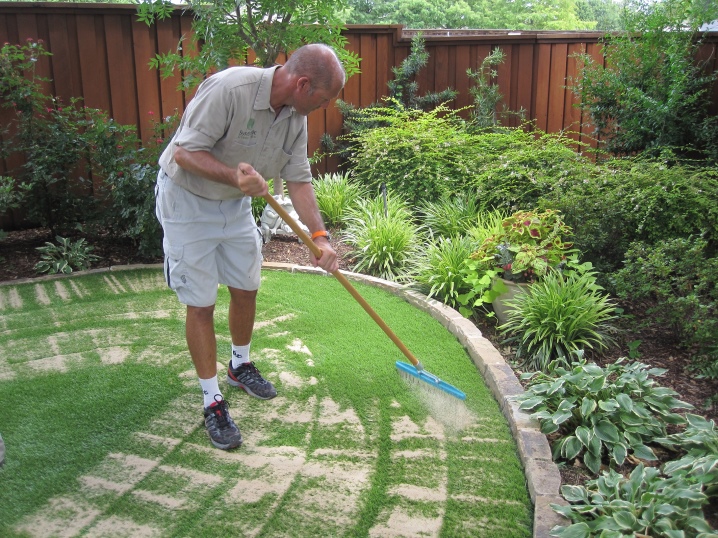
How else can you use it?
With the development of art related to the design of residential premises, artificial turf is increasingly used in the interior. It looks original as a decor on the wall - both on the balcony and in a room decorated according to all the rules of the snow-white Scandinavian style, which identifies the connection with nature. In skillful hands, sections of artificial turf will become an indispensable material in the manufacture of topiary figures (shrub figure) both for summer cottages and for decorating an apartment. The topiary in the room is not only a decoration, it is also endowed with magical properties (attracting money, if it is a coin tree, etc.).
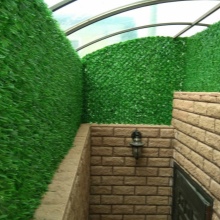
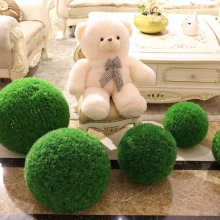
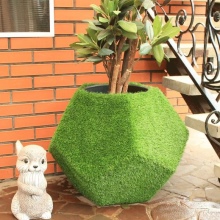
Sometimes it becomes necessary to use artificial grass as flooring in aquariums where turtles are kept. This is due to the fact that at night some pets like to move the aquarium paraphernalia (for example, stones), creating an unpleasant grinding noise. The lawn is also used as an aquarium decoration, which, in the opinion of users, creates a lot of trouble, since all the aquarium dirt is sitting in the grass. Outside the city, fences or walls of gazebos, verandas are made out with rolled grass, which gives a special charm.
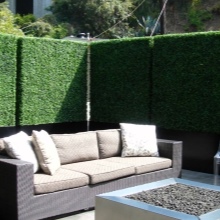

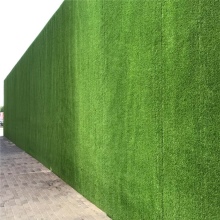
Review of customer reviews
According to customer reviews, mainly summer residents, artificial lawns have more advantages than disadvantages. The pluses include such moments.
- Sufficiently high resistance to frost.
- The coating does not require, like natural grass, regular and exhausting maintenance.
- With the right installation, once you spend it, you can enjoy a green lawn almost all year round.
- When walking on barefoot, the soft fibers of a semi-covered lawn have a good massage effect, which is the prevention of flatfoot formation in children.
- Artificial turf is the only way to achieve landscaping where natural grass won't grow.
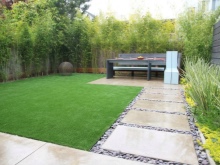

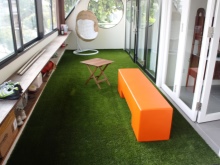
The disadvantages include high cost. On average, this is from 500 to 1200 per square meter. Users note that cheap lawn models emit a pungent and unpleasant odor in a fairly hot summer. The area covered with synthetic fibers does not allow you to fully enjoy the countryside life - it lacks the aroma of fresh grass.
For information on how to lay artificial turf on concrete, see the next video.



































































The comment was sent successfully.